Kundalini is a Sanskrit word derived from “Kundal”, Kundal simply means “a ring”, not the ring for hand, the round ring for ears. The Kundalini is also a position when a snake sits rounded making layers one by one to secure or guard something very important. In the ancient Vedic Ages, we hear some stories of snakes when the snakes used to guard a precious gem called “Mani”, or “Naagmani”.
Kundalini in the Human body is energy sitting like a snake positioning as Kundalini which is sleeping all the time until we try to awake at. This energy is unconscious as default but if we do some Meditation, Yoga, Pranayama, and other practices, we can awake Kundalini. The Kundalini is so powerful energy that can completely change a human life when awakened.
The word Kundalini means the divine power which is in an inactive form in the base of the spine or Muladhara chakra. This energy, when cultivated and awakened goes to the upside through the body and activates all chakras one by one. There are 7 chakras found in our body as our main energy junctions.
7 KUNDALINI CHAKRAS IN HUMAN BODY:
- Muladhara (Root Chakra) (मूलाधार चक्र)
- Swadhisthana (The Sacral Chakra) (स्वाधिष्ठान चक्र)
- Manipura (Solar Plexus Chakra) (मणिपूर चक्र)
- Anahata (Heart Chakra) (अनाहत चक्र)
- Vishuddha (Throat Chakra) (विशुद्ध चक्र)
- Ajna (Third Eye) (आज्ञा चक्र)
- Sahasrara (Crown Chakra) (सहस्रार चक्र)
THE 7 CHAKRAS MEANING ARE:
- Muladhara = I am
- Swadhisthana = I feel
- Manipura = I do
- Anahata = I love
- Vishuddha = I speak
- Ajna = I see
- Sahasrara = I understand
7 CHAKRAS COLORS
-
- Muladhara = Red
- Swadhisthana = Orange
- Manipura = Yellow
- Anahata = Green
- Vishuddha = Blue
- Ajna = Indigo
- Sahasrara = Voilet
Tip:
- Formula to remember: ROYGBIV
7 CHAKRAS LOTUS PETALS NUMBER COUNTING
-
- Muladhara (Root Chakra) = 4 Petals
- Swadhisthana (The Sacral Chakra) = 6 Petals
- Manipura (Solar Plexus Chakra) = 10 Petals
- Anahata (Heart Chakra) = 12 Petals
- Vishuddha (Throat Chakra) = 16 Petals
- Ajna (Third Eye) = 2 Petals
- Sahasrara (Crown Chakra) = 1000 Petals
Tip:
- Formula to remember: [(4+6) = (10)] + [(10)] + [(12+16+2 = 30)]
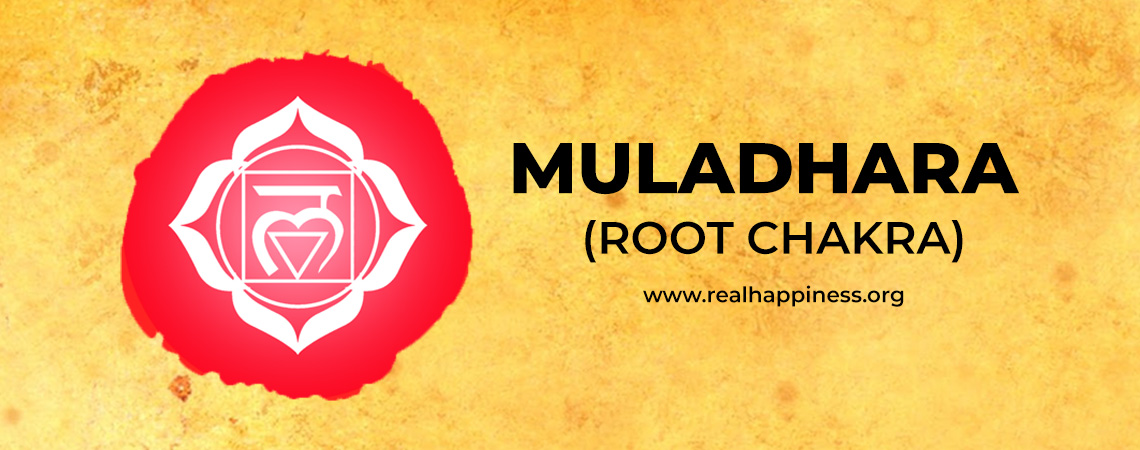 MULADHARA – THE ROOT CHAKRA
MULADHARA – THE ROOT CHAKRA
Muladhara is the 1st chakra located in root and basis of Existence. Mula or Mool means root and Adhara mean the basis. It is symbolized by a lotus with four petals and the color red. Muladhara is also so near to Kundalini Energy that’s why a yogi should practice Kundalini Meditation to awaken Muladhara first, because the level of interest is always increased when you feel something inside. More than 95% of people never try to awaken the chakras or just die on this chakra. Muladhara Chakra direct relation is with sexual desires, laziness, sleep, attractions, lust, greed, anger, sadness, joy, trust, disgust, allergy and much more.
Muladhara is located near the coccygeal plexus beneath the sacrumit, or superficial activation point, is located between the perineum and the coccyx or the pelvic bone. Because of its location and connection with the act of excretion, it is associated with the anus. Muladhara is said to be the base from which the three main psychic channels or nadis emerge: the Ida, Pingala and Sushumna. It is also believed that Muladhara is a subtle abode of the Hindu God Ganapati. In the highest revered prayer for Ganapati, the Ganapati Atharvashirsha, it is mentioned that “one who worships Lord Ganapati would easily grasp the concept and realize Brahman. The seed mantra syllable is लं (lam).
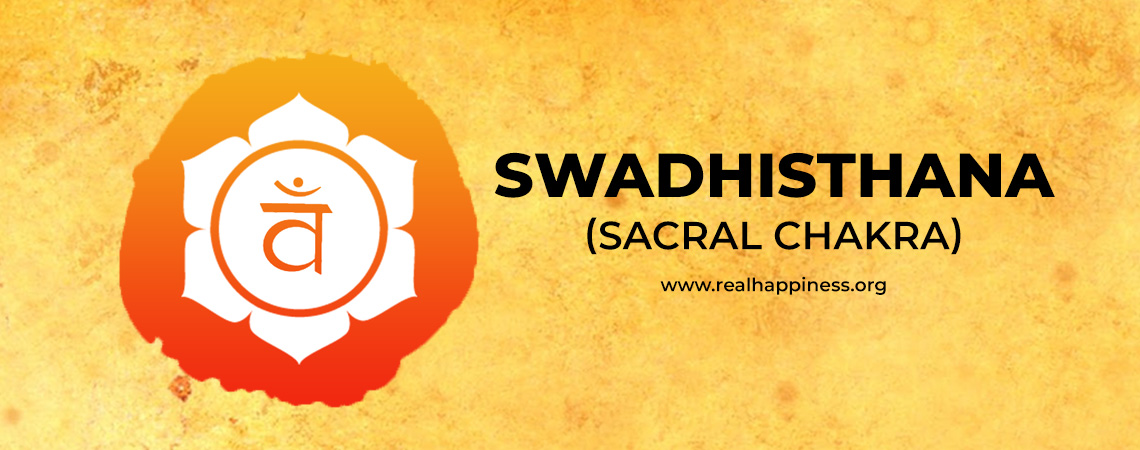 SWADHISTHANA CHAKRA
SWADHISTHANA CHAKRA
Swadhisthana is the 2nd Chakra and its meaning is “Swa” means self and “adhishthana” means established, so “where your being is established”. This chakra is blocked by fear especially the fear of death. Svadhisthana is located two finger-widths above the Muladhara chakra. Svadhisthana contains unconscious desires. Swadhisthana blockage indicates a lack of creativity, stress, fear of sadness and also happiness, instability, addiction, dependency, low confidence and much more. The meaning of Swadhisthana is “I feel” which means this chakra is directly related to feelings. Because this chakra relation is with water so it is symbolized to the life flow, fluency and exploring nature.
One who meditates on Svadhisthana is believed to obtain the following siddhis: freedom from enemies, the status of a lord among yogis, eloquence and clarity (“words flowing like nectar in well-reasoned discourse”), loss of fear of water, awareness of astral entities and the ability to taste anything desired for oneself or others. The seed mantra syllable is वं (vam). Because this chakra related to water and the lord of water is Varuna, so, the lord of Swadhisthana (the sacral chakra) is Varuna. That’s why the seed mantra syllable is वं (vam). This chakra is also a part of lower chakra so it is very important to activate this chakra.
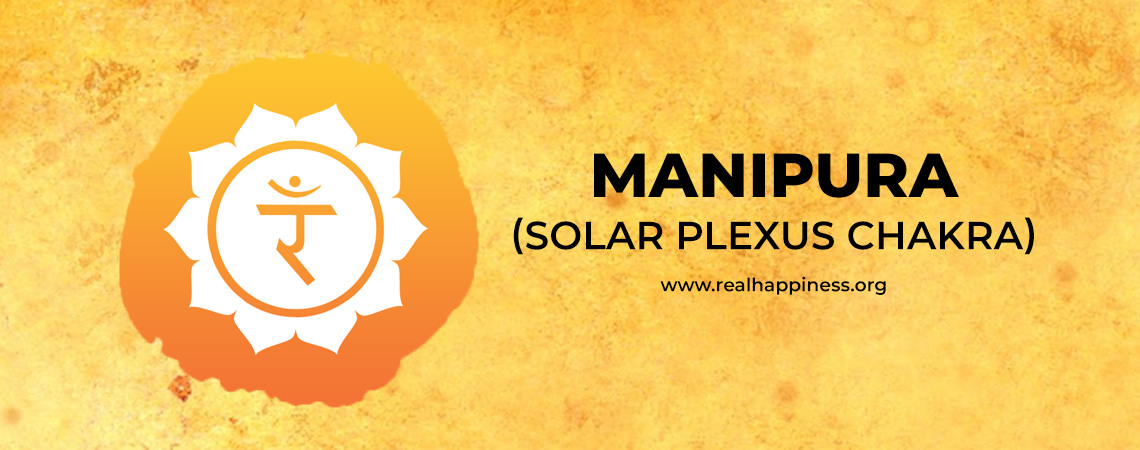 MANIPURA CHAKRA
MANIPURA CHAKRA
Manipura (Solar Plexus Chakra) is 3rd primary chakra located above the navel and it is an important chakra for humans. Manipura literally means “resplendent gem”, the mani (gem) was found in Vedic stories as a property of Naag and Naagin (Male and Female Snake). Manipura directly indicates the yogi’s transformation because it is the home of Fire and vital wind Samana Vayu which controls govern digestion and metabolism. The seed mantra (Beej mantra) is the syllable ‘ram’ रं. Within the Bindu, or dot, above this mantra resides the deity Rudra (Mahadev Shiva). Because this chakra is related to Fire so that’s why the lord of Solar Plexus Chakra is Shiva.
One who activates the Manipura, always be happy and focusing on Karma. This chakra helps to remove all the doubts of destiny because of one who is enamored with Karma knows the role of destiny in life. Manipura is the last chakra of the lower chakra series. So once a Yogi Activates it, he will be so close to getting a balanced life and removal of all obstacles of life. Karma is so important in life because it gives results, so by activating the Manipura (Solar Plexus Chakra) you will always take interest to do some productive and never excuse and run from Karma. Manipura is considered the center of karma power, dynamism, energy, will power and passion.
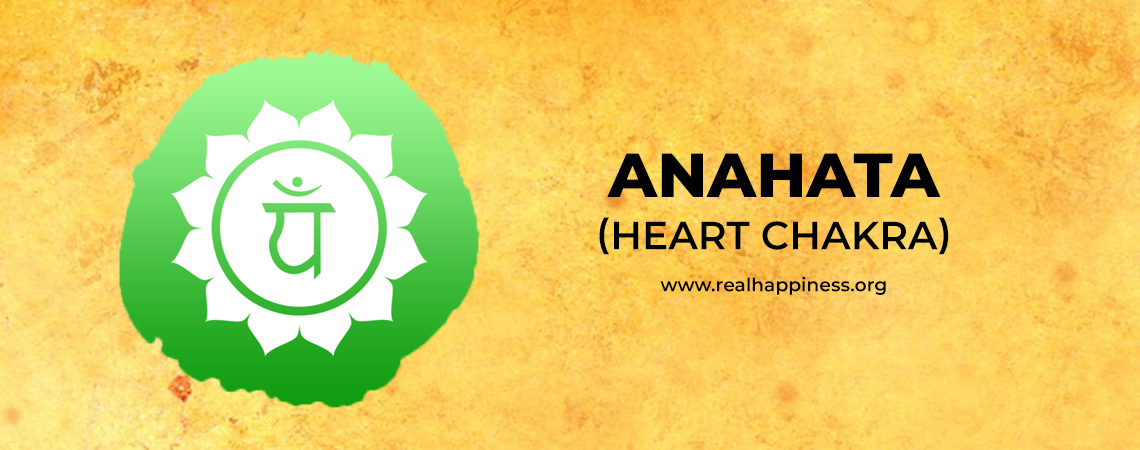 ANAHATA CHAKRA
ANAHATA CHAKRA
Anahata literally means “unhurt, unstruck, and unbeaten”. Anahata Nad refers to the Vedic concept of unstruck sound (the sound of the celestial realm). Anahata indicates balance, peace and serenity. In Vedic Sanskrit Anahata means “sound produced without touching two parts” and at the same time, it means “pure” or “clean”. The heart chakra (Anahata) is located in the central channel of the spine near the heart, some people have doubts that Anahata is located on the left side of the chest which is heart position, but its actual position is the center of our chest, which is also the place of the soul (atma). Anahata (Heart Chakra) is the center of lower and upper chakras.
The Beej mantra/seed syllable is the mantra “yam” यं. Ya(m) indicates the “Yogi”, The Krishna is known as Yogi which was a favorite character of Lord Vishnu. Krishna is a yogi because he balances everything being a human in Dwapar Yuga. One who activates Heart Chakra always feels love, compassion, devotion and surrounded by lovely persons. You will focus on the harmonious relationship, forgiveness, trust and unconditional love. The perfect power of this chakra is when it is balanced in terms of love for self and others. In simple words, Anahata activation means love and kindness in a balanced way.
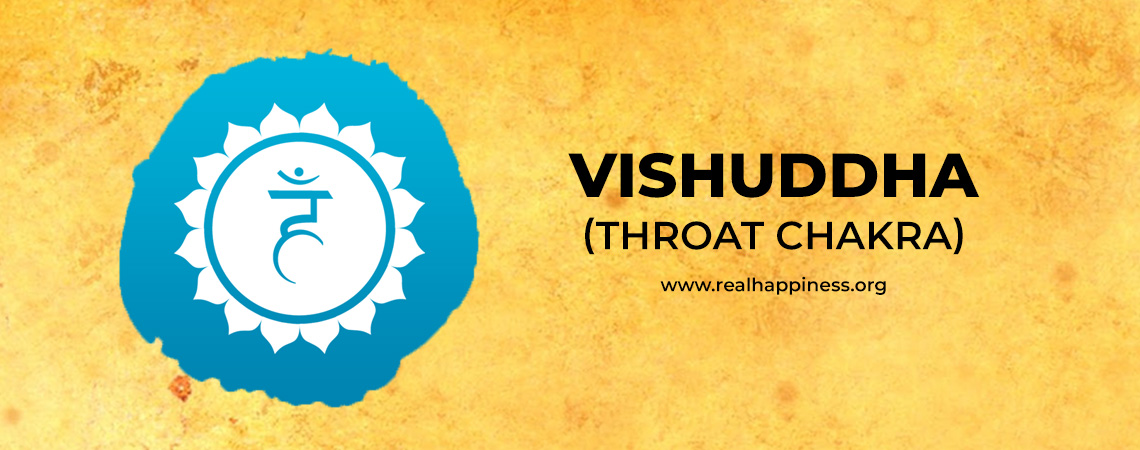 VISHUDDHA CHAKRA
VISHUDDHA CHAKRA
Vishuddha or Vishuddhi, or throat chakra is the fifth primary chakra in our body. Vishuddha is positioned at the throat region above the collarbone in the center of the throat (Larynx). This is 1st Upper Chakra in the body. The Beeja Mantra of Vishuddha is the syllable हं haṃ. Ham represents the goddess “Saraswati” who is known as “Hamsini”, this is the reason of this seed mantra called Ham. The goddess Saraswati is the wife of Lord Brahma. This Chakra reigns all the energies connected with the throat mainly vocal. When this Chakra is fully balanced, your communication skills are enhanced. The Vishuddhi Chakra is the starting point of Udana Prana.
The word Vishuddhi literally means “Purification”. This chakra represents the sound and the universe element of body. The Vishuddhi Chakra helps us to have a clear, accurate and apparent vision and vocals. When the yogi’s Vishuddhi is activated, he becomes a great leader, a good speaker and a great persona. This chakra helps us to aware of the food and breath we take every day. The food, water and air are the main responsible elements of making our body fit and healthy. Vishuddhi is responsible for whatever we say. So accordingly we say, we create. If we say thanks to God every day many times, it will work on our destiny.
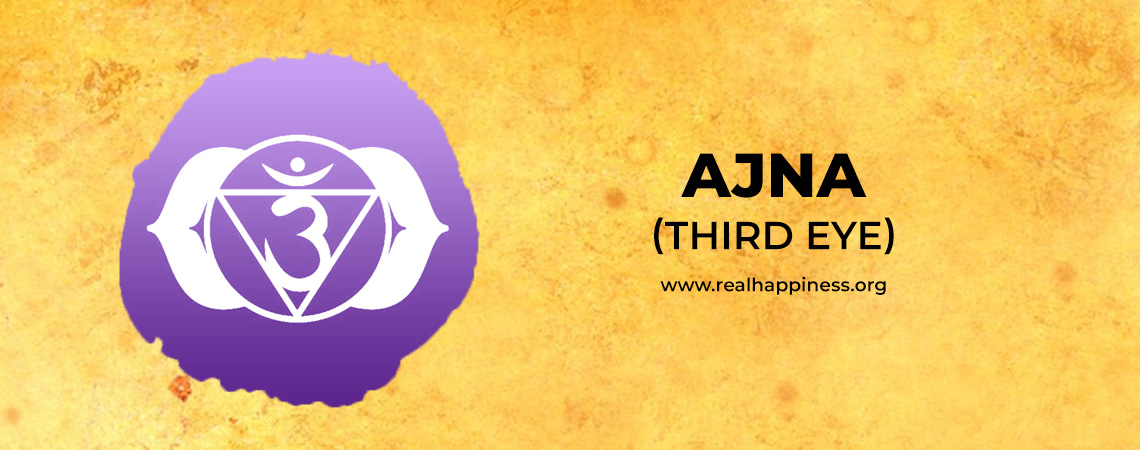 AJNA CHAKRA
AJNA CHAKRA
Ajna (Sanskrit: आज्ञा]), guru chakra or third-eye chakra, is the sixth primary chakra in the body according to Hindu tradition. Ajna or Agya chakra is also known as Guru Chakra, Guru means who gives us direction in life. So, Ajna gives us the path and answers all our questions. By the regular practice of meditation, focusing on the third eye, a yogi can achieve the state of wisdom. By reaching to this chakra, a yogi can be in illusion for a long time because before reaching the wisdom (I see), one can be distracted. The Ajna chakra is located in the center of the forehead between the eyebrows (called the third eye).
The god of Ajna chakra (Third Eye) is Shiva. The seed syllable (beej mantra) of Ajna is “Om” ॐ or ओम which is a well-known mantra (supreme sound of the universe) in Vedic meditation. This mantra is taken from “Omkara”, which is a name for Lord Shiva. A person can see the actual things behind the visible things after the activation of Ajna Chakra. Ajna activation makes a person very clear in vision and imagination of something. After activation of this chakra, you have a feeling of Shivoham Shivoham, Shiv – O – Ham means = I am Shiva and I will never misguide you because I am far from human attachments and I can see the truth.
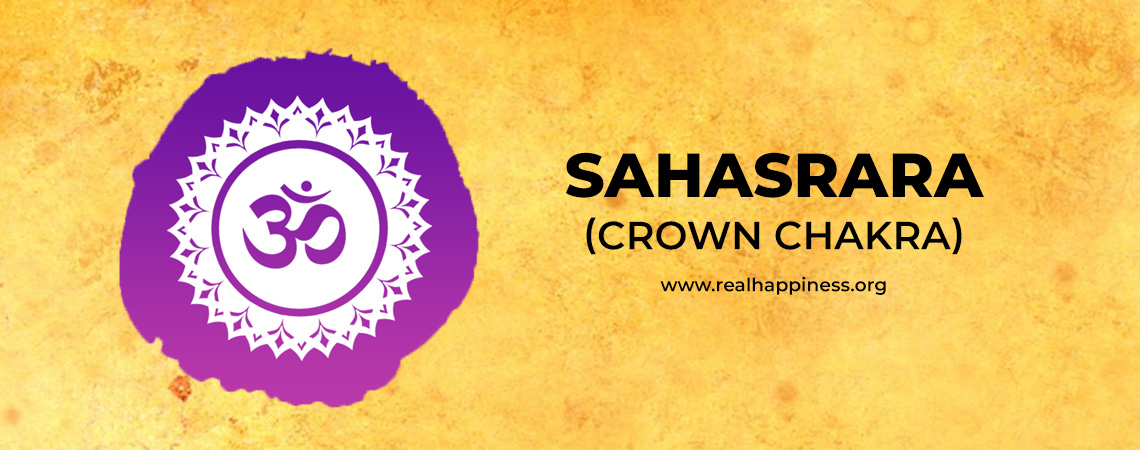 SAHASRARA CHAKRA
SAHASRARA CHAKRA
Sahasrara (Sanskrit: सहस्रार, Sahasrāra, English: “thousand-petaled”), or Crown Chakra is generally considered the seventh primary chakra in the human body. Crown Chakra is pure consciousness and it means “I understand”. By reaching this chakra, a yogi understands everything and never confused in life. Crown Chakra is the symbol of higher-level Awareness of consciousness, Realization, unlimited peace and liberation from limiting patterns. The seed syllable (beej mantra) of Crown Chakra is “Omkar” ॐ or ओमकार which is a well-known mantra (supreme sound of the universe) in Vedic meditation. Only some famous yogi reached this Chakra such as Buddha.
Crown Chakra is satte of Shoonya or Samadhi. Crown Chakra is a connection to supreme power and it is long-lasting happiness and freedom which is achieved by only some great gurus on earth. This chakra is far from sorrow, fear of anything such as death, Agyan (lack of knowledge) and other bad habits of humans. Sahasrara Chakra is limitless powers and Symbol of Infinity. No nature rules will be applied to you if you reach here. Because this chakra has limitless power so it is the hardest chakra to awaken or activate. It may take many-many years of tapa (burning by karma) to activate the Sahasrara and it is only possible when the supreme power wants it.


 Share on bsky
Share on bsky




Read 0 comments and reply